In today's fiercely competitive environment, effective territory territory mapping management is an essential pillar of any successful sales strategy. A well-researched sales territory map visually organizes leads, current customers, and their assigned reps by geographic territories. By prioritizing grouping prospects and customers across various data densities, industries and geographies, you can strategically target each section of your map, which can drive dramatic improvements in sales performance to reach and exceed your goals.
With careful planning and the right sales territory mapping software, companies can:
- Boost revenue while reducing costs
- Maximize productivity and efficiency
- Align around customer segments or industries
In addition, territory management software can help you build, balance, and re-align territories faster than ever - what used to take a week or more, you can now do in just hours. And Advanced visualization tools like sales mapping software provide a deeper understanding of your data, delivering actionable insights that can help you identify under or over-served areas.
With the information you gather from these maps, you can assign reps to regions with precision, maximize their strengths, and balance their workloads.
What will you learn from this guide?
- What a sales territory is
- What exactly is territory mapping?
- Why you should be using territory mapping software to manage your alignments
- The basics of creating territories
- How to select the right sales territory mapping software for your needs
What is a sales territory?

Let's begin with the basics: A sales territory is a specific geographic area, business industry, or customer account segment that's assigned to an individual salesperson or team. Each territory is defined based on a combination of various factors, including:
- Geography
- Sales potential
- Past performance
- Rep workloads
- And more
The ultimate goal of dividing regions, groups and sectors into these territories is to target a specific market with a tailored strategy that boosts sales effectiveness while reducing costs. However, this is easier said than done.
The structure, distribution, and borders of your territories will significantly impact team performance, sales efficiency, and your organization's overall bottom line.
Mapping sales territories isn't as simple as identifying where your potential customers are and assigning your nearest service or sales reps to them. Taking such a rudimentary approach to sales mapping can result in certain reps being overworked while others are underutilized. It can also lead to missed opportunities and a misallocation of resources. These are all critical elements of territory alignment and balancing.
What is territory alignment and balancing?
Sales territory alignment is a proven productivity strategy in which a company distributes accounts to individual sales or service reps by specific geographic or regional territories. The basic building blocks are states, counties, ZIP code areas, or accounts (often referred to as accounts-based territory design). Territory balancing ensures that territories offer field-based teams equal opportunity or sales potential. Ensuring the organization maximizes revenue potential.
You may also want to balance your assigned territories on factors like:
- Sales potential
- Travel time
- Workload
- Customer volume
- Opportunities
- Leads
- Territory size
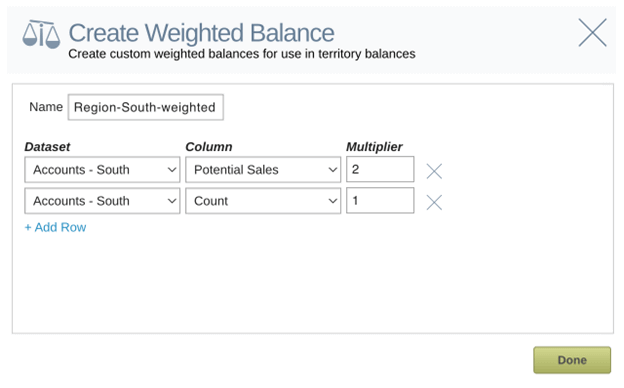
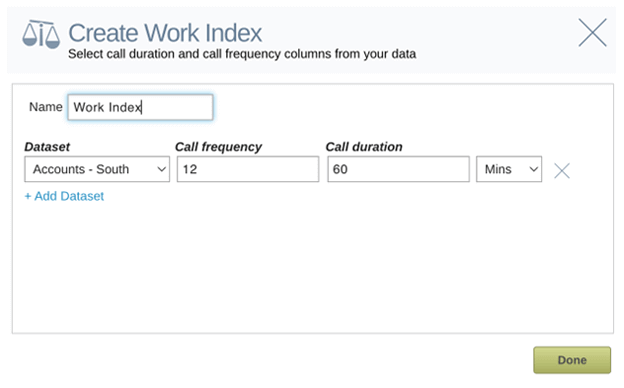
It's often best to select multiple weighted factors that are relevant to your overall business goals. You can align and balance your territories for optimal performance and efficiency. In the example above, we used two balances
- Weighted balance. In effect, we are getting the software to prioritize potential sales over the number of accounts.
- Work index. Think of a work index as a measure of a rep's workload. Ideally, you want to balance rep workloads and create territories with equal opportunity.
Benefits of territory alignment
Unbalanced territories are a headache for sales operations, leaders, and sales and service teams. If a sales or service territory is too big or if the workload is too heavy, your team cannot effectively cover all customers and prospects.
A salesperson whose territory lacks opportunity or has too little workload can waste their potential on low-priority clients, leading to underutilized sales resources and an unmotivated salesforce. As a result, the company loses money, time, and potential customers.
Balanced territories are effective and efficient, allowing you to get the most from your sales team by allocating more equitable sales opportunities.
With strategic, equitable alignment and balancing, you can get the most out of your sales team by:
- Improving selling time profitability
- Reducing travel time and costs
- Motivating sales reps with high-quality clients
- Maximizing your overall earning potential
At the end of the day, the way you align and balance your territories has a massive effect on your bottom line. When you create sales territory maps that incorporate the factors discussed above, you get a clear overview of where your territories stand and how you can improve your management process.
Increase sales and reduce service costs
A significant benefit from sales territory mapping is improved territory management, which can lead to increased sales and reduced costs. Managers can leverage information from sales maps to improve market coverage, allowing sales teams to be more efficient at making each sale and grasping new opportunities, gaining a competitive advantage.
Aligned territories will result in balanced workloads for sales and service personnel, providing them greater earning potential, improved morale, and career satisfaction. It leads to higher motivation and lower staff turnover. Look for a Territory mapping tool that includes route optimization capabilities.
Route optimization is integral to effective sales territory mapping and refers to planning a rep's drive to maximize sales stops while minimizing travel time. The more efficient your reps' routes are the greater return on investment you get for your field team's service day. The best territory mapping software can help identify route inefficiencies and suggest more streamlined alternatives.
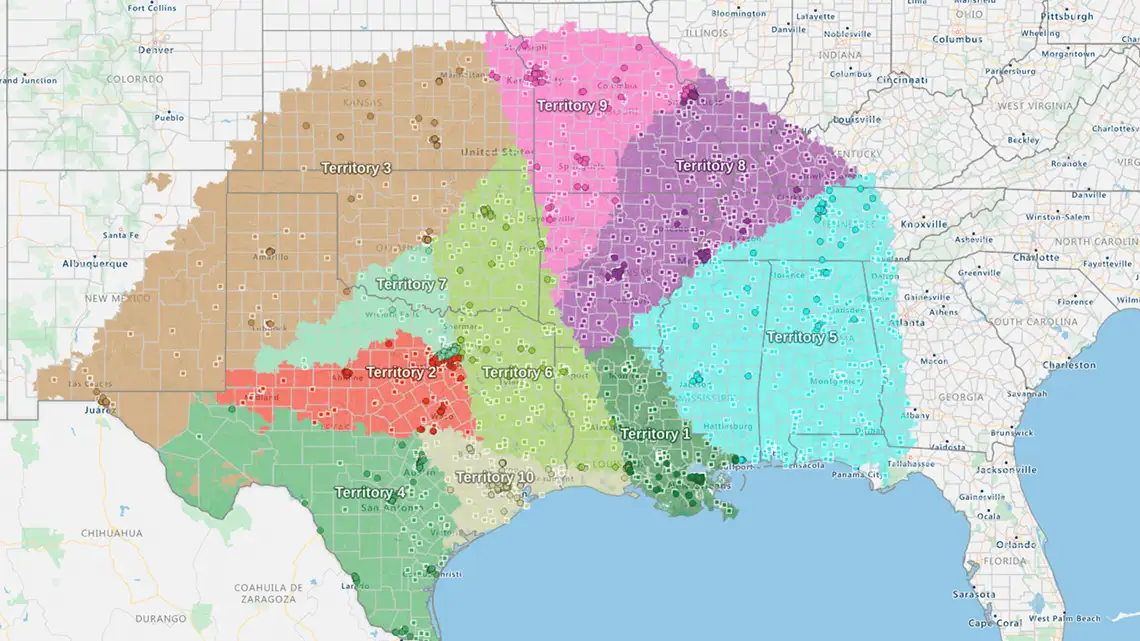
The next step after optimizing territories is to ensure your sales and service team optimize their selling days. With route optimization software, you can add an extra daily call by providing an optimal schedule.
Reporting and analytics
Visualizing territories using mapping software allows you to access analytical tools and performance reporting options. With Mapping software, you can easily aggregate your data to get consolidated performance views. You can segment and filter data, isolating sales above or below a specific value. You can also overlay demographic and geographic data to identify insights into your market.
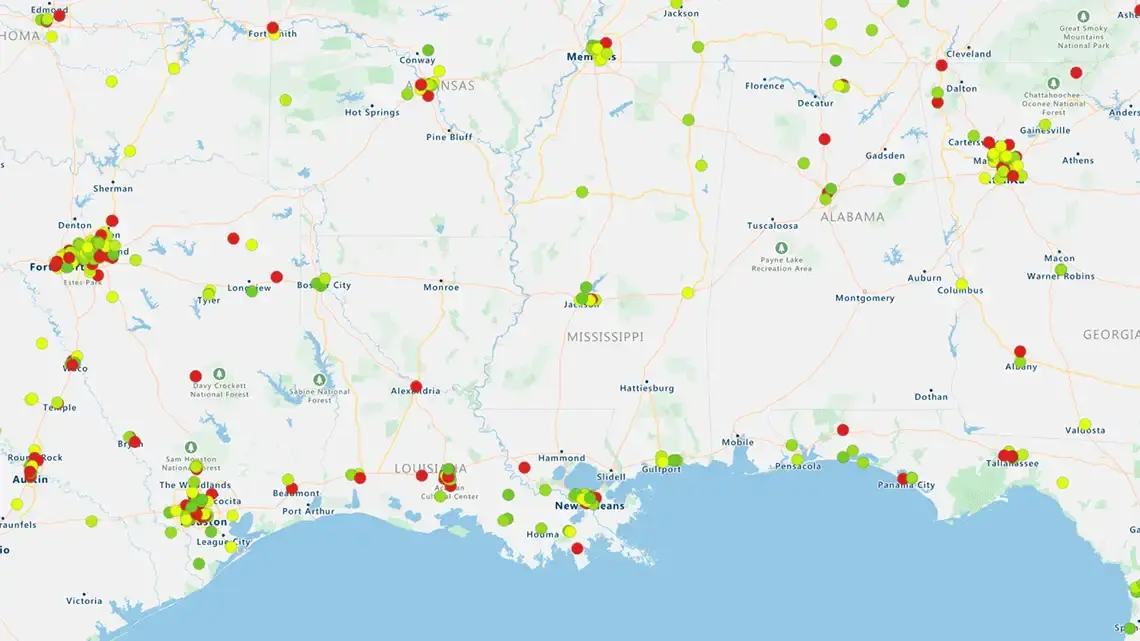
Share maps with your team, who can create reports, analyze their territories, and measure their current performance against quotas and targets. You can share new alignments or territory scenarios for approval. After all, sales maps aren't meant to be static. Buyer behaviors vary from one phase of life to the next. Sales reps move. World events like pandemics and elections can trigger changing economic circumstances for existing customers. So be prepared to create a sales territory map one quarter, and an entirely new one the next.
Data visualization
The human brain can interpret visual content faster and easier than textual information. The brain interprets almost 90% of all information visually, so sales teams and managers take note.
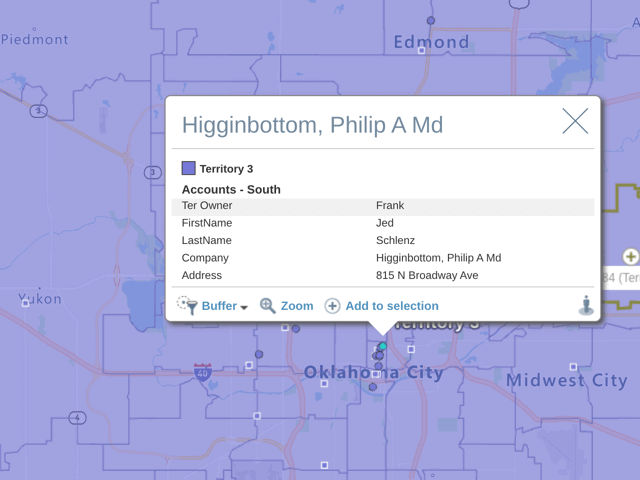
It's proven that managers who use visual data tools are 28% more likely to find relevant information than those who rely solely on traditional reporting and spreadsheets. Data Visualization lets you optimize and visualize the data from your customer relationship management (CRM) software and spreadsheets. An interactive map allows discovery of hidden insights and patterns not possible in spreadsheets.
Seeing a territory from a variety of different perspectives allows for the bigger picture but also more granular insight. For example, zoom in to see greater detail based on market characteristics such as customer types or assigned sales reps.
Sharing and collaboration
Territory mapping software enables collaboration and sharing between sales managers and sales personnel. You and your sales team can better input/edit sales data. For sales teams located remotely, seamless collaboration is essential. Cloud-based solutions allow teams to collaborate and give real-time feedback on alignments from any office location or field.
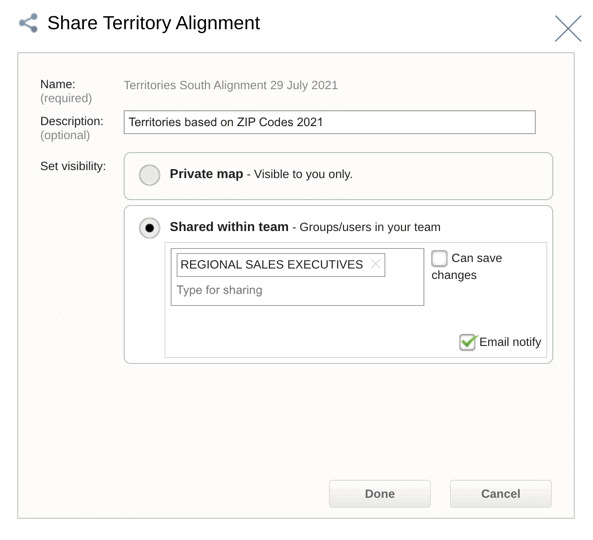
For example, a nationwide sales team member can add their data, latest sales, or leads to a territory daily, creating a complete, up-to-date holistic view of their territory. Sales leaders can share historical sales performance, territory definitions, and current performance against quota. It facilitates a constructive sales performance conversation using a single source of sales data.
The instantaneous nature of collaboration in online territories reduces the necessity of expensive and time-consuming onsite sales performance reviews. Easily share territory maps publicly or privately online. Include them in your presentations and high-quality print hard copies. For sales teams located remotely, seamless collaboration is critical. Cloud-based solutions allow teams to collaborate on the definition of their territories from any location, office, or field in real-time.
The benefits of effective territory mapping
Let's take a closer look at some of the additional benefits that sales territory mapping solutions can bring to your organization.
1. Access multiple manual realignment options
No optimization tool is perfect, even with state-of-the-art artificial intelligence (AI) or machine learning algorithms. Your mapping solution should give you the ability to make manual adjustments as needed.
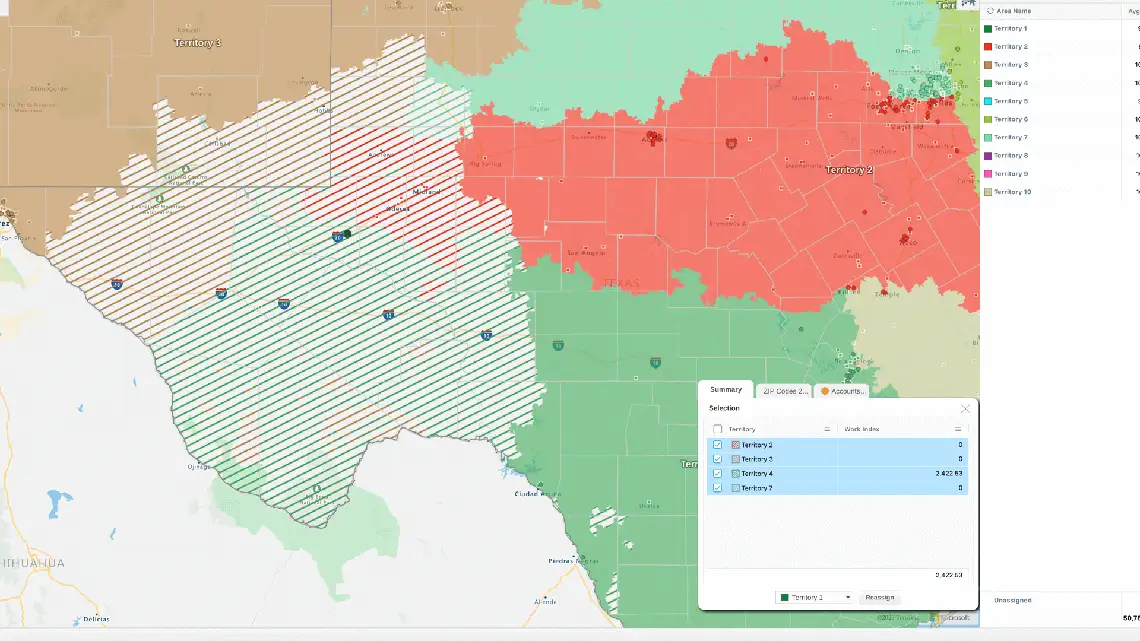
2. Maximize efficiency with account exceptions
For larger sales organizations, account exceptions are a must-have. When you're creating your geographic sales territories, you'll likely have a few accounts dedicated to different representatives. Account exceptions allow you to allocate specific customers to different reps outside of the region.
3. Compare and contrast alignment scenarios
It's always a good idea to get external input on your alignment scenarios. This "seeing and sharing" feature is critical, enabling different people to offer suggestions based on local knowledge.
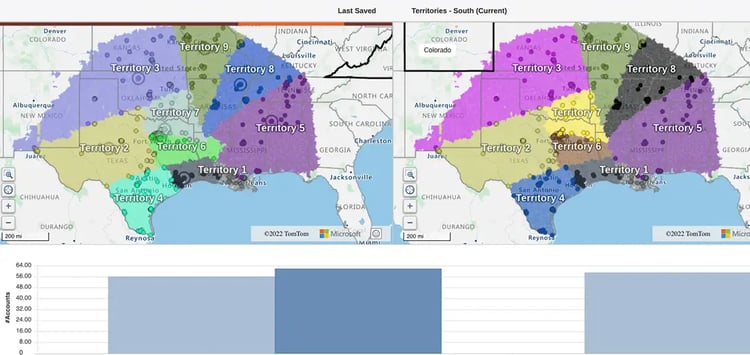
4. Unlock the power of workload balance
By tracking workload metrics (i.e., the number of accounts for each rep), you can see where some territories are overburdened and others are underutilized. With a weighted balance tool, you can adjust your reps' workloads for optimal performance. For example, you could create a balance of 30% time spent with prospects, and 70% spent with existing accounts.
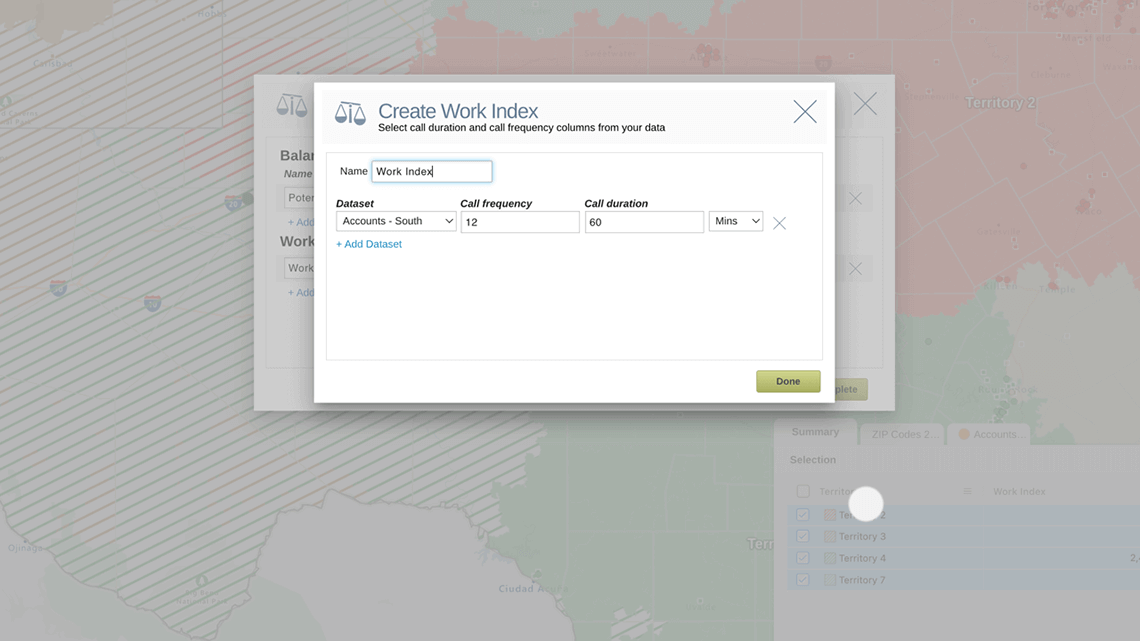
In the image above, we add a workload balance. Update the call frequency and duration in minutes and eSpatial will calculate the travel time. Each territory will require an equal level of effort from each rep to maximize sales potential.
5. Gain actionable insights from reports and visualizations
Visualizing your territories and sales data with a mapping tool allows you to gain a better understanding of your team's performance and present detailed analyses and reports. That way, you can track KPIs, analyze territories and share new insights easily.
Mapping software: A critical element in managing territories
Between sales rep and customer data, there's a lot of information to consider when creating territories. So, how do sales operations ensure their maps incorporate all relevant stats? Fortunately, you don't need to be a cartographer in today's day and age; all you need is a good mapping software.
A modern mapping solution allows you to bring your data to life with more meaningful visualizations. Simply upload your existing geographic, customer and sales data from spreadsheets, CRM or ERP systems, and the software automatically generates a vibrant map with actionable insights.
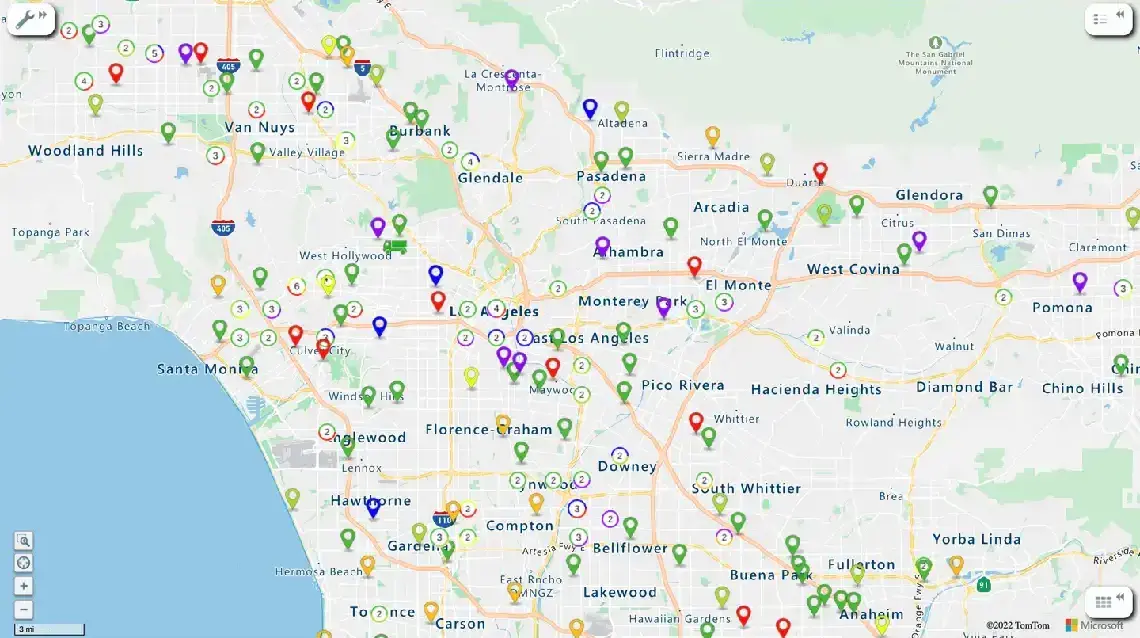
This visual display enables seamless interaction with highly flexible features and filters to dig deeper into your data. The best mapping solutions offer annotation and communication capabilities to share maps and collaborate with leadership and other team members. With these visualization and collaboration tools, it's faster and easier to draw insights that drive better decision-making.
12 reasons why territory mapping software is essential
- Increases profits and drives sales productivity
- Quickly divide a target area into more manageable regions
- Allocates and realigns territories to sales teams more effectively
- Improves collaboration across the sales team
- Cultivates better sales leads
- Build your territories from predefined locations (zip codes, counties, states, provinces, and countries)
- Creates territories straight from a spreadsheet
- Overlay other geographic regions or points for reference
- Balances your territories on multiple data sources
- Creates Hierarchies to match your company's reporting structure
- Produces vibrant maps for presentations and reporting
- Optimizes your selling day with routing
How to manage territories with mapping software
Before you begin mapping territories based on intuition, it's important to take a step back and look at your overarching business goals. Start by defining your objectives, whether it's revenue, sales volumes or another target. With these goals clearly outlined, you can better align your territories as you go.
When you're ready to start mapping, follow these steps:
- Import customer and sales data from various datasets into your mapping software.
- Set geographic boundaries at the state, county, ZIP code and account-level.
- Visualize your customer stops, priority accounts and high-density areas on the map.
- Organize and filter this data by specific attributes, such as sector or account type.
- Analyze sales performance across these regions to uncover opportunities.
- Leverage territory alignment and route optimization to maximize selling time and ROI.
Once you've completed these steps, keep an eye on the performance of your new territories and make adjustments along the way.
Making the right choice in territory mapping software
Whether you're new to the world of territory mapping or you're looking for a better solution, your starting point should always be to assess your business needs and expectations. Ask yourself what you're trying to achieve with your sales data and how you'd measure success.
When it comes to evaluating your options, you'll want to identify a few essential features, including:
- Seamless integration with the rest of your digital ecosystem.
- Custom territory creation and data filters for specific attributes.
- Flexible territory alignment and balancing features.
- Color-coded heat maps to highlight point densities and areas with high sales potential.
- Collaborative scenario planning for new alignments or territories.
- Advanced analytics and reporting tools that provide actionable insights.
- Secure sharing features that improve communication and efficiency.
- Integration with territory and route optimization software.
Use this as a checklist in your search, and you're sure to find the right solution for your sales team.
1. Do you require hierarchies?
Do you require various levels of visibility to match your sales organization structure? If so, you should choose a mapping software solution with hierarchical features. These features allow you to set up multiple hierarchical tiers for a territory map.
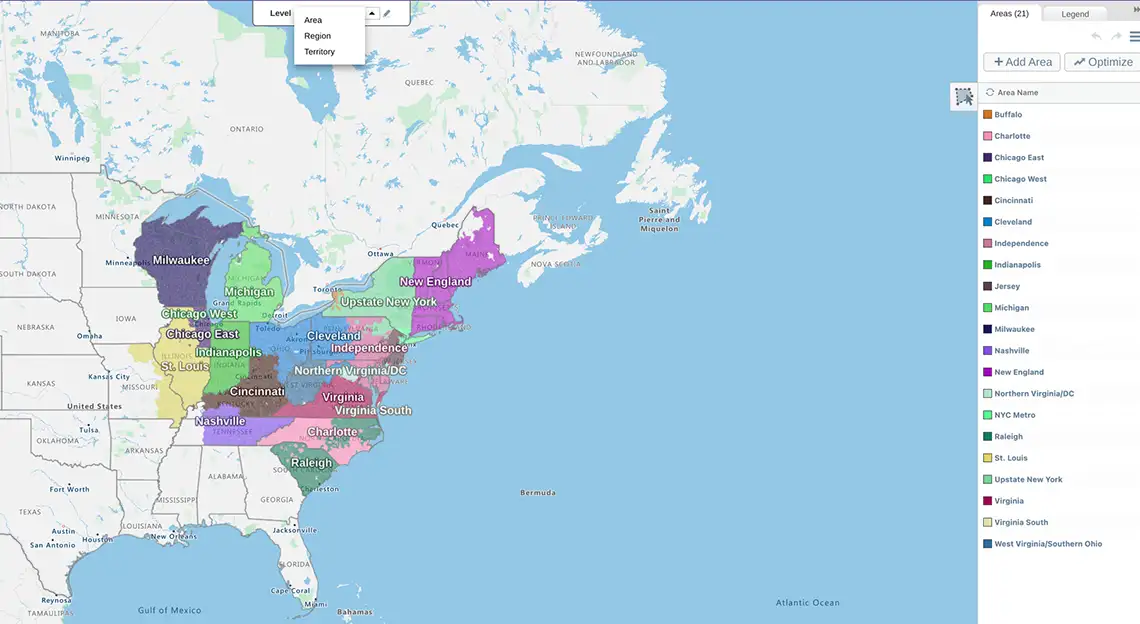
Select a hierarchy level
The lowest level is territory
Look for the following capabilities:
- Import and build sales hierarchy definitions
- Assign a territory to a sales team member
- Delegate responsibility for territories to a sales team member
- Control visibility of assigned sales territories
2. Can it scale as your business grows?
Having a solution that can scale along with your business is vital. Your ideal vendor should be cloud-based as one of the most prominent cloud features, besides reliability, is its ability to scale. When working with sales data, which can be changeable, it needs to be able to grow and update along with your business. On-premise software is limited in its ability to increase capacity and requires time and effort to upgrade.
Cloud-based solutions allow businesses to scale up or down without buying expensive software licenses or installing programs.
3. Can you collaborate and share with your field team?
Proper management of sales territories involves the collaboration of multiple users on a sales team. Allowing numerous users to access the same maps can enable time savings and real-time coordination.
When selecting a territory mapping software for your sales team, having the ability to collaborate and even delegate some of the work is crucial.
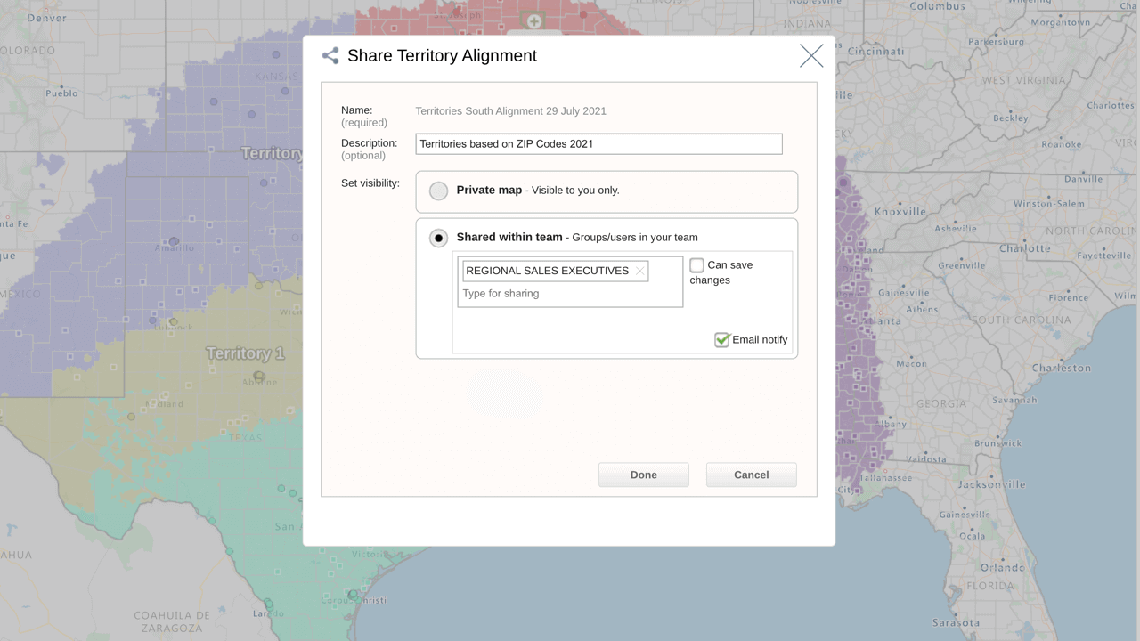
Look for the following capabilities:
- Share live territory maps easily
- Allocate permissions for maps
- Securely share maps internally and externally
4. Can you layer in 3rd party data?
Are you looking to compare your sales data with additional information, such as demographics, to reveal the age, gender, or population of customers in your territories? Look for the following capabilities that support:
- Multiple globally available data sets (e.g., US, Canadian, European datasets, etc.)
- Census demographic data
- Customized datasets
- Global geo-coding
5. What are your reporting needs?
Performance reporting will be essential to critical stakeholders in your organization, so it is likely to be a key decider when you are reviewing mapping software providers.
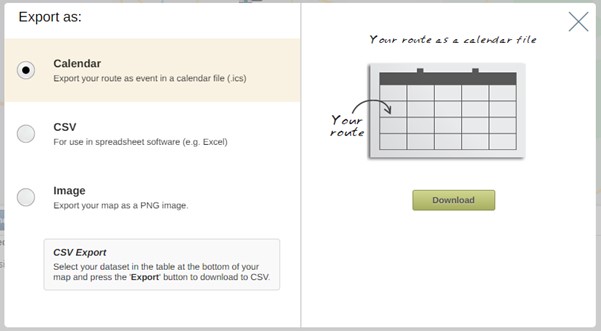
Look for the following capabilities:
- Export/print high res booklet of territories, including hierarchy structure
- Export for PowerPoint presentations
- Create customized reports
- Report using heat maps, radius maps, and filtered views
6. Is it easy to use?
Any software you adopt for your organization or sales department must be easy to use. There are many mapping software solutions available; however, most will need a high degree of configuration and customization for territory management.
The perfect mapping solution will have an easy-to-use interface, no install requirements, ongoing automatic updates, and dedicated support.
7. Is support available when I need it?
In-app support is vital for any service used in business today. While many services provide help forums and websites, the vendor you select should give in-app support such as live chat allowing users access to experts on demand. A dedicated account manager is also vital for ongoing support. They will check in with you periodically and can make recommendations to help you achieve your goals based on your usage.
Look for a solution designed and built by Sales territory mapping experts. After all, effective management relies on up-to-date and easy-to-understand territory maps. Your sales team will use the software daily, so it's important that the mapping software you choose is intuitive and user-friendly.
Finally, the vendor should also have a detailed onboarding process to help your sales team quickly become efficient with the software. Use this checklist to identify the best territory mapping software for you. You'll need a mapping software platform with these features:
- Integrated platform with mapping and route optimization capabilities
- Territory and alignment, and balancing
- Workload index
- Scenario planning
- Points-based or accounts-based alignments
- Create custom territories
- Reporting tools
- Radius maps
- Heat maps
- Route optimization
- Collaboration
- Secure sharing
- Dedicated account manager
- Onboarding and training
- Live chat support
- Create territories from a file
- Native on Salesforce
- Upload business data directly
 by
by 
